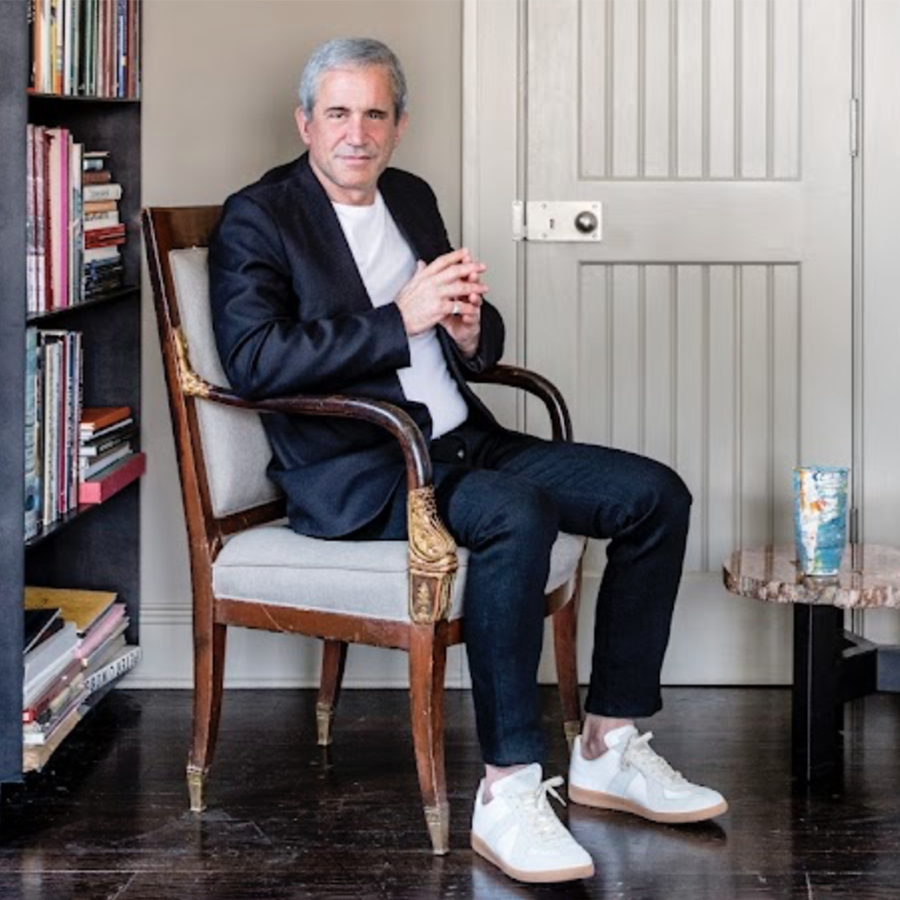Dennis Freedman: Talent-spotter, Trendsetter
The Visionary Behind The Dennis Freedman Collection
As creative director of W magazine, commissioning top photographers, stylists, and other talents to execute fashion shoots across the globe, Freedman was responsible for all aspects of its punky, art-forward aura. Later at Barneys NY and now as a creative consultant to various luxury houses and brands, he brings new voices and perspectives into the realm of fashion. He has always had a knack for knowing who would make it big; Mario Sorrenti, Juergen Teller, Inez and Vinoodh, Steven Meisel, Paolo Roversi, and Craig McDean are among those he’s collaborated with over the course of his career.
Freedman’s eye for talent-spotting extended to his collecting endeavors as well. Although he is best known for pursuing radical Italian design from the 1960s and 70s, Freedman is also a devotee of the contemporary scene, a patron of some of the most exciting young designers and artists of the early 21st century. He has a special knack for recognizing promising emerging talents before others catch on, as well as a sixth sense for what piece would ultimately come to define a designer’s oeuvre and prove most relevant and coveted over time.
He was one of the first private collectors in the U.S. to own works by the Campana Brothers, including a Sushi sofa prototype and a sculptural screen was shown in the Brazilian duo’s first MoMA show. Also in his holdings are a Cubic daybed by then-thirtysomething French designer Régis Mayot and works by the American artist Jessi Reaves acquired at the start of their careers.
He was also patron to the most prominent Dutch designers to emerge from the Design Academy Eindhoven in the early 2000s, all now market darlings. He secured an early work from Maarten Baas’s “Where There’s Smoke” series, a burnt reproduction of a Charles Rennie Mackintosh chair, from the designer’s very first U.S. showing, at Moss in 2004. Similarly, Freedman hunted down Jeroen Verhoeven’s Cinderella table, a digitally informed take on a rococo bombe, just after its 2006 Design/Miami presentation—scooping MoMA in the process.
Perhaps the most important Dutch-designed piece in Freedman’s portfolio is the aluminum Bone chair he acquired directly from Joris Laarman after reading about it in the pages of Domus. Only a handful were ever made, most now residing in museums, and the exoskeletal form has consistently shattered auction records. Together, these pieces represent a moment in time now viewed—and valued—as a key turning point in 21st-century design. Freedman not only bought these works before they trended, he helped establish them as signposts of collectible design.
The Dennis Freedman Collection is on view April 20–August 11, 2023.
